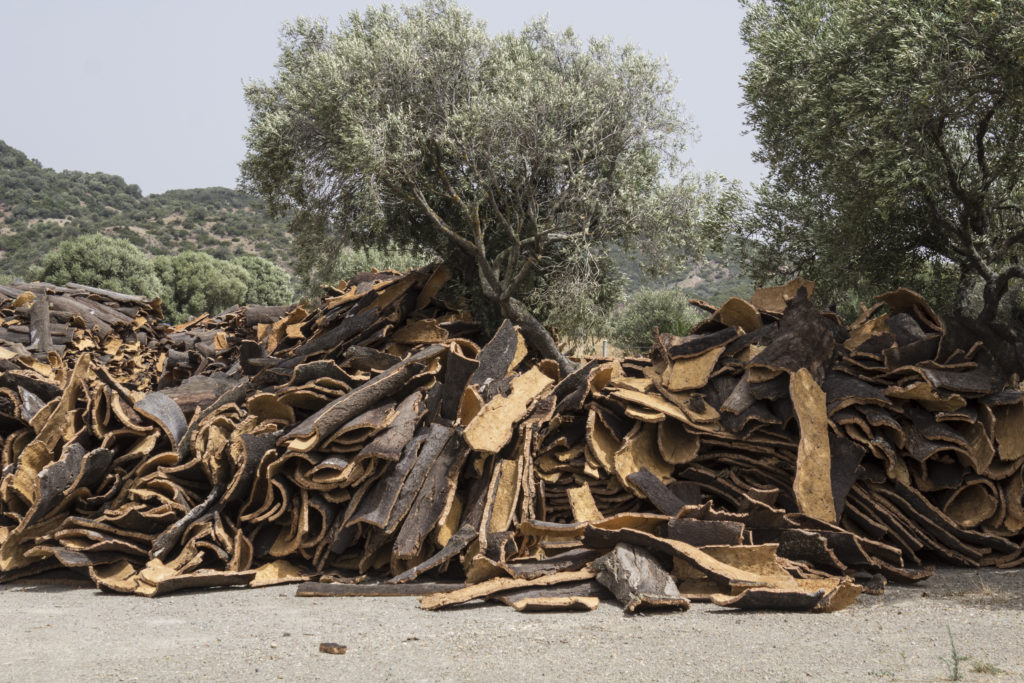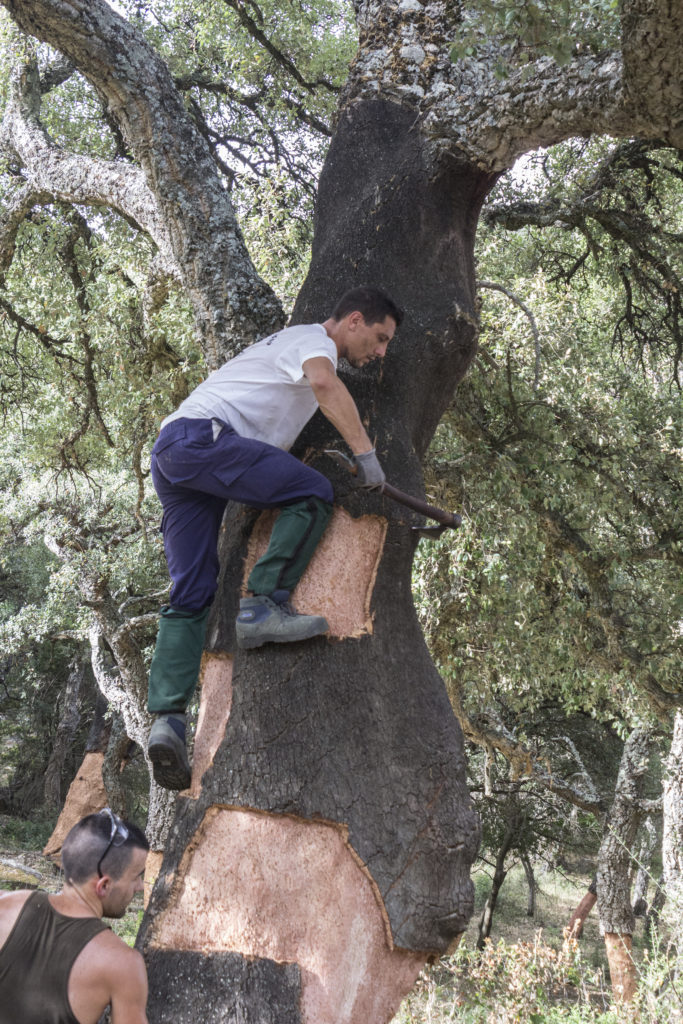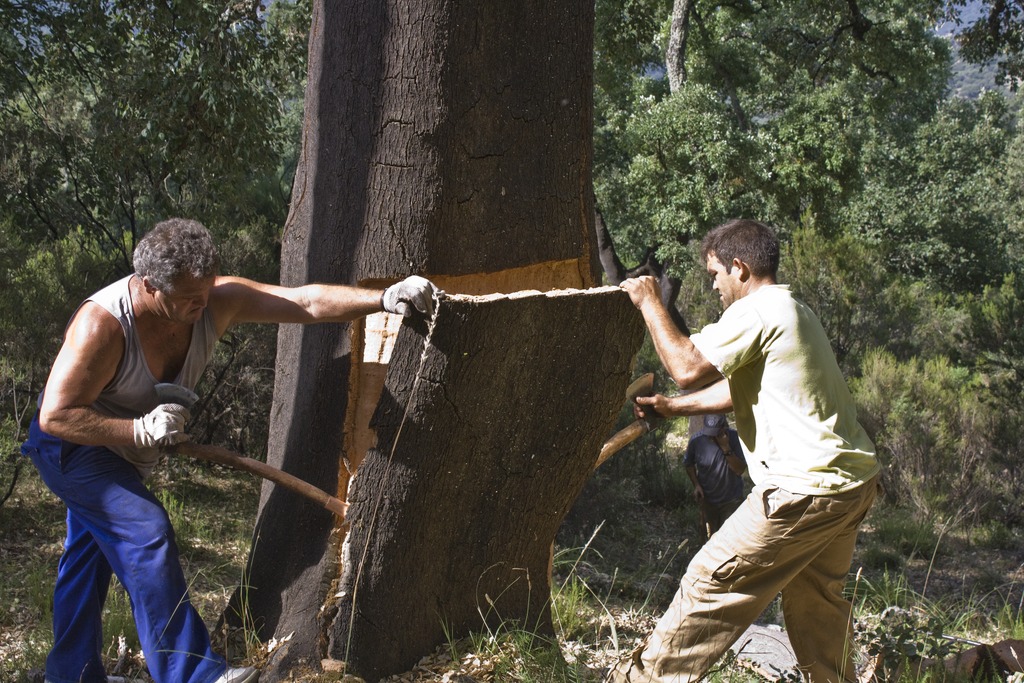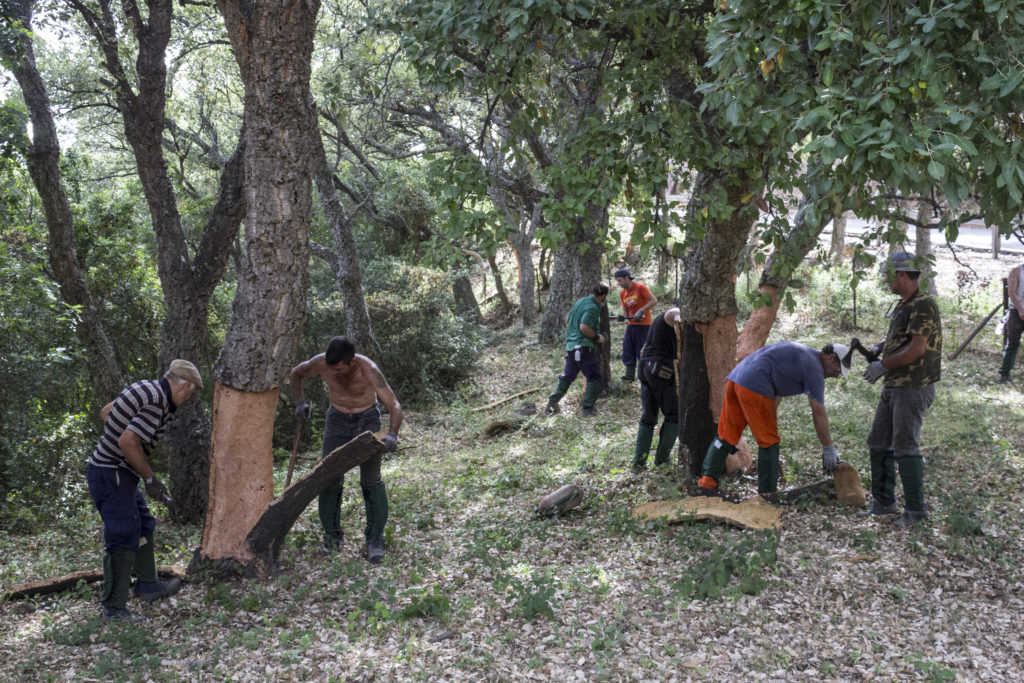Descorche (Cork harvest) in Los Alcornocales Natural Park
Cork stripping consists of the artisanal extraction of the most superficial layer of the tree species quercus suber , known in Spain as alcornoque (cork oak). The “peeling of the cork oak” is a silvicultural activity that is currently aimed mostly at providing the raw material, cork, mainly to the industry producing stoppers for glass containers. Another industrial application, although a minor one, is the production of exterior boards for insulation.
The use of the bark of this tree has been an activity linked to physical spaces where the material was found in abundance, i.e. in territories where there has existed until the present day a significant mass of cork oak woodland, known as alcornocales (cork oak groves).
Historical Notes
The natural park of Los Alcornocales is one of the most extensive and best preserved cork oak forests in Europe, with Alcalá de los Gazules being the town with the largest extension in the Park. Richly endowed with trees, this natural space was used for livestock in the distant past (15th, 16th and 17th centuries) and for charcoal in the more recent past (1940s and 1950s). Since the first third of the 19th century, cork harvesting has been one of the most important activities carried out in the natural park, given the repercussions on the territory and the number of people employed in this activity. It was in the second third of the 19th century that intensive cork extraction began in Andalusia.
Once wine or champagne sealed with a cork stopper became popular, the French cork oak forest was surpassed by the demand for this product around 1750, so it crossed the border and began to require cork from the Catalonian cork oak forest. The formula for these wines was transmitted to Catalonia and, coinciding with the beginnings of the industrialisation of cork stopper production, they soon realised that the Catalonian cork oak trees could not cover the demand, both domestic and foreign. By 1830, the search for cork had reached de regions of Andalusia and Extremadura.
Cork harvesting is a difficult skill to acquire, and can only be learnt through experience passed down from father to son, from expert to apprentice, and requires many years of practice.
At present, cork production continues to take place in an integrated and sustainable system. However, cork and its production are in danger for various reasons, including new artificial substitutes. Even so, Andalusia is the largest cork-producing region in Spain, producing more than half of the total national production, and its productivity is very high per hectare and year, second only to Extremadura.
Other regions of Andalusia that stand out in the extraction and production of cork are the Campiña de Jerez, in Cádiz and the Sierra Norte, in Seville.
Period/Occurrence:
Seasonal. The activity is carried out between the months of June and the end of August each year. Cork reproduction in this area requires a minimum of nine years under normal weather conditions, so the extraction areas are divided into nine portions (trazones), so that each year a portion is uncorked so that by the time the last portion is uncorked the nine years necessary for the cork from the first trazón to have reproduced have passed and the cycle begins again.

Planchas de Corcho. Alcalá de los Gazules. Photo: Víctor Gañán Pérez. © Instituto Andaluz del Patrimonio Histórico
IAPH image under the conditions established under license cc-by 3.0 de Creative Common. https://creativecommons.org/licenses/by/3.0/es/

Descorche. Alcalá de los Gazules. Photo: Victor Gañán Pérez. © Instituto Andaluz del Patrimonio Histórico
IAPH image under the conditions established under license cc-by 3.0 de Creative Common. https://creativecommons.org/licenses/by/3.0/es/

Despegando la corcha. Jerez de la Frontera. Photo: Eva Cote Montes. © Instituto Andaluz del Patrimonio Histórico
IAPH image under the conditions established under license cc-by 3.0 de Creative Common. https://creativecommons.org/licenses/by/3.0/es/

Descorche. Alcalá de los Gazules. Photo: Víctor Gañán Pérez. © Instituto Andaluz del Patrimonio Histórico
IAPH image under the conditions established under license cc-by 3.0 de Creative Common. https://creativecommons.org/licenses/by/3.0/es/
Instituto Andaluz del Patrimonio Histórico. (2015). IAPH patrimonio inmaterial Transhabitat: saca del corcho. Parque Natural de los Alcornocales (Cádiz). [Video File].

